Growing garlic in pots is a great way to enjoy fresh garlic all year round, even with limited space. Garlic is a versatile vegetable that can add flavor and nutrition to any dish.
But growing garlic in pots can be challenging if you don’t know what you’re doing. We will cover everything you need to know about growing garlic in pots. From choosing the right container and soil to planting garlic cloves and managing potential pests and diseases, we’ve got you covered. We’ll also share some essential tips on how to grow garlic in pots successfully and avoid common mistakes that many beginners make.
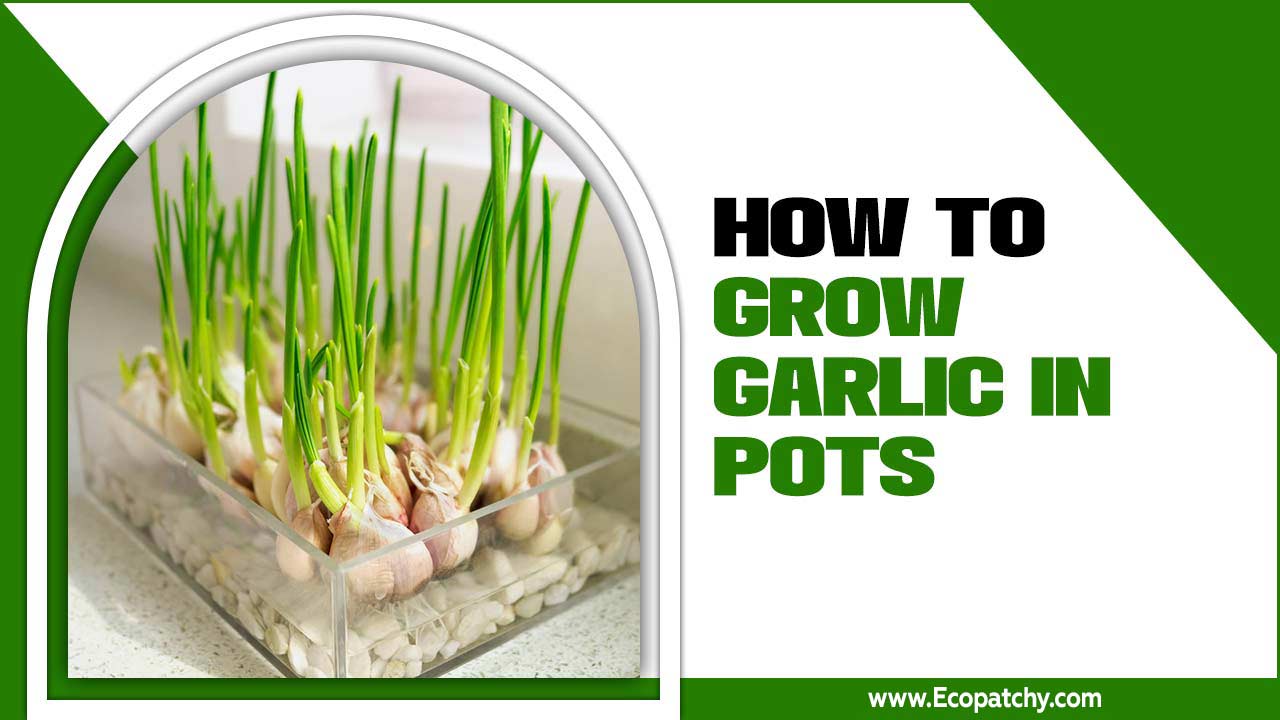
Garlic Varieties Suitable For Pot Cultivation
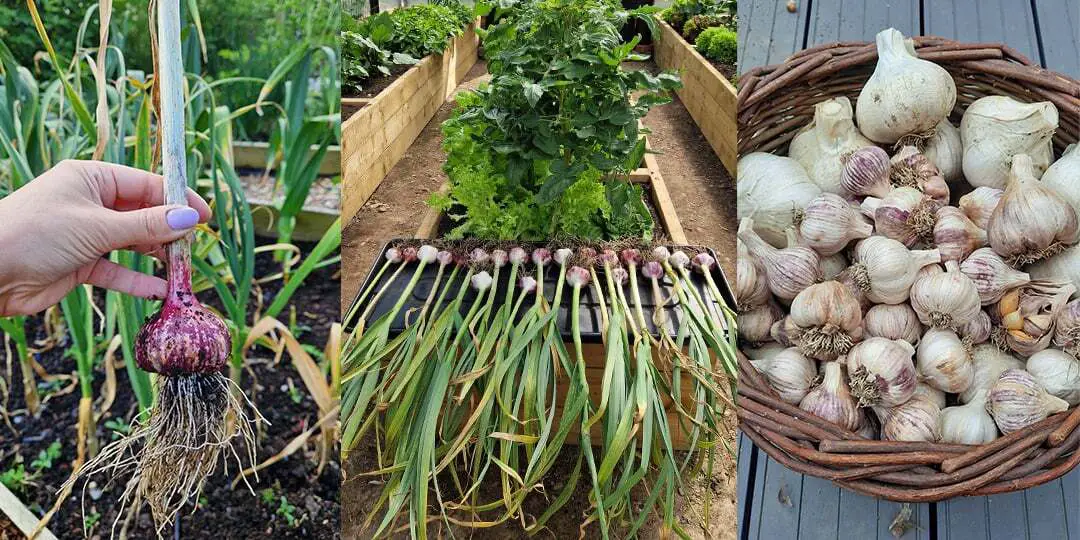
Growing garlic in pots can be a great way to enjoy fresh garlic, even with limited space. When choosing garlic varieties for pot cultivation, selecting ones well-suited to container gardening is important. You can ensure a successful and flavorful harvest by choosing the right garlic varieties for your pots. Here is a list of garlic varieties that are known to perform well in pots:
- Inchelium Red: This softneck variety is known for its mild flavor and large bulbs, making it a popular choice for cooking.
- Spanish Roja: With its bold flavor and beautiful purple stripes, this hardneck variety adds taste and aesthetic appeal to your dishes.
- Music: Known for its strong flavor and large cloves, Music garlic is a favorite among chefs and home cooks.
- Early Italian Purple: This softneck variety produces small bulbs with a rich, intense flavor that adds depth to your culinary creations.
7 Tips On How To Grow Garlic In Pots

Garlic, a member of the allium family, along with onions and leeks, is a versatile plant easily grown in pots. Each garlic bulb consists of individual cloves, which are the planting units. For successful growth, garlic requires full sun and well-drained soil. Growing garlic in pots can be a rewarding and convenient way to enjoy fresh garlic right from your own garden.
Here are 7 tips on how to grow garlic in pots:
1.Select the Right Pot
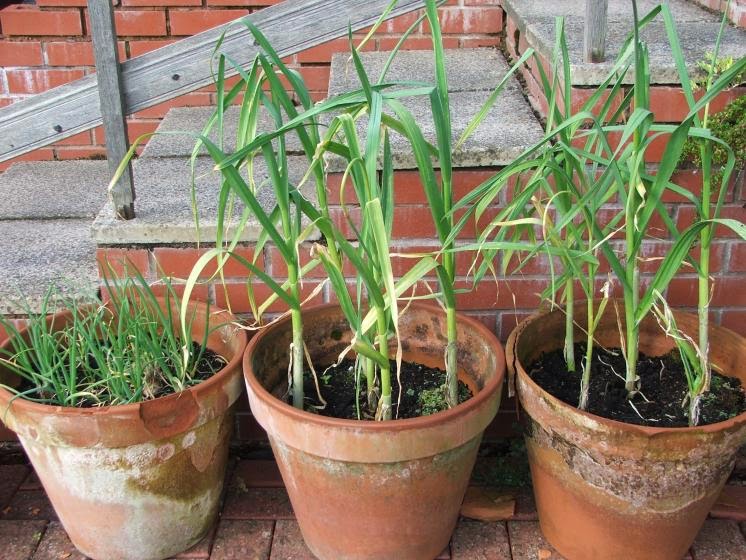
When growing garlic in pots, selecting the right pot for optimal growth is important. Choose a pot that is large enough to accommodate the garlic bulbs and has drainage holes to prevent waterlogging. Consider using a terra cotta or plastic pot for better airflow to the roots.
Ensure the pot is deep enough to allow the garlic roots to grow freely. Opting for a pot with a diameter of at least 12 inches is recommended to allow multiple garlic bulbs to be planted. By selecting the right pot, you provide the garlic with the ideal conditions to thrive and produce a bountiful harvest.
2.Choose the Right Soil
When growing garlic in pots, it is crucial to choose the right soil. Opt for well-draining potting soil that is rich in organic matter. This soil type ensures proper drainage, preventing waterlogging and promoting healthy growth.
Additionally, the soil should have good fertility to support the development of garlic plants. Avoid using heavy clay or garden soil, which can impede drainage and hinder growth. To enhance the nutrient content of the soil, mix in compost or well-rotted manure. Aiming for a slightly acidic to neutral pH level in the soil is also important, as this promotes optimal garlic growth.
3.Plant at the Right Time
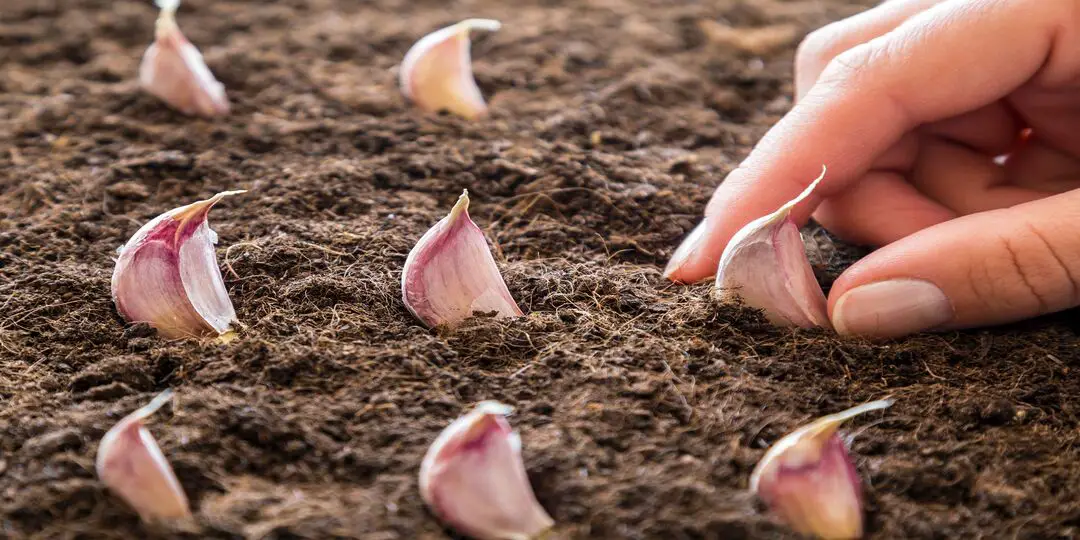
When it comes to growing garlic in pots, timing is crucial. The ideal time to plant garlic cloves in pots is in the early spring, once the soil has thawed and is workable. However, if you live in a warmer climate, you can also plant garlic in the fall for a spring harvest. It’s important to note that garlic cloves must be chilled 4 to 6 weeks before planting to ensure proper growth.
Avoid planting garlic cloves in pots during the hot summer, as they may not develop properly. By planting at the right time, you give your garlic the best chance to thrive and produce flavorful heads of garlic.
4.Water Regularly
To ensure the healthy growth of garlic plants in pots, it is essential to water them regularly. However, it is important to strike a balance and avoid over-watering, as garlic bulbs are susceptible to rot in waterlogged soil. You can simply insert your finger into the potting mix to determine the moisture levels.
When watering, do it deeply to ensure the water reaches the roots. Remember that the watering frequency should be adjusted based on the weather conditions and the specific moisture needs of the garlic plants. Providing adequate and timely watering can help your garlic plants thrive and produce abundant garlic heads.
5.Mulch to Retain Moisture
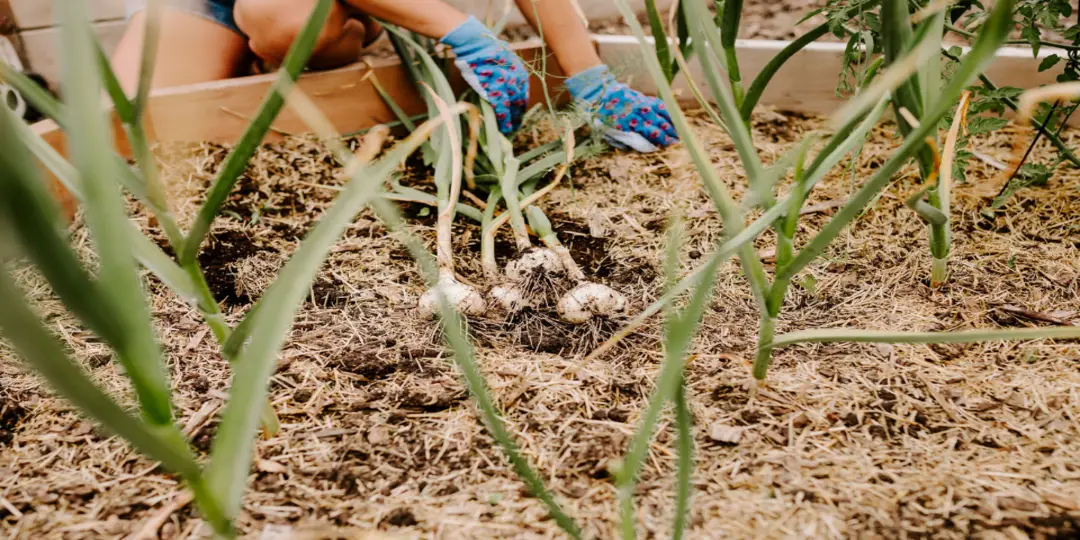
To retain moisture and prevent weed growth, consider using mulch. Mulching helps regulate soil temperature and moisture levels, creating a favorable environment for your garlic plants. Apply a thick layer of straw or compost around the plants to provide optimum moisture retention.
Mulching also prevents soil erosion and improves overall soil health. Organic mulches like leaves or grass clippings can be used to enhance sustainability.
Incorporating mulch into your garlic pot cultivation ensures the plants receive the necessary moisture and nutrients for healthy growth. With these simple steps, you can create an ideal growing environment and maximize the potential of your homegrown garlic.
6.Provide Adequate Sunlight
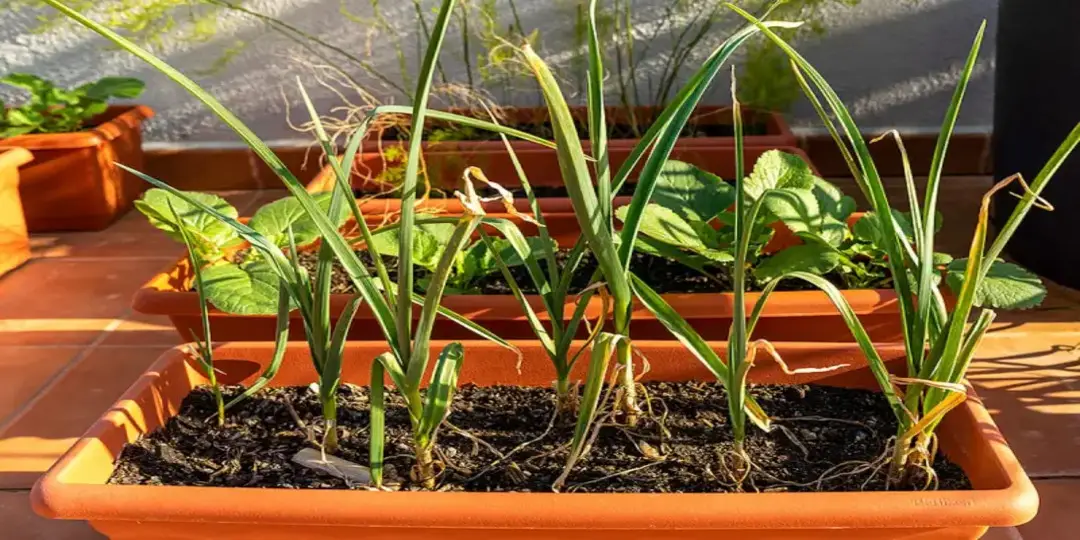
To ensure the healthy growth of your garlic plants, providing them with adequate sunlight is crucial. Place your garlic pots in a sunny location that receives at least 6 hours of direct sunlight. Garlic plants require plenty of sunshine to develop strong bulbs.
Make sure that the pots are not shaded by trees or other structures that can block the sunlight. Place the pots near a bright window or use grow lights to mimic natural sunlight if you are growing garlic indoors. Adequate sunlight is essential as it promotes photosynthesis, which is necessary to develop flavorful garlic.
7.Fertilize for Optimal Growth
To ensure optimal growth of garlic plants, it is important to fertilize them properly. Use a balanced fertilizer that provides essential nutrients, following the manufacturer’s instructions to avoid overfeeding. Organic fertilizers like compost or manure can also benefit garlic growth.
Regularly monitor soil nutrient levels to ensure the proper development of garlic. However, be cautious not to excessively fertilize as it can lead to burning or stunted growth. By providing the right nutrients in the right amounts, you can promote healthy growth and maximize the potential of your garlic plants. Remember to nourish your plants, but avoid going overboard.
Choosing the Right Container for Growing Garlic
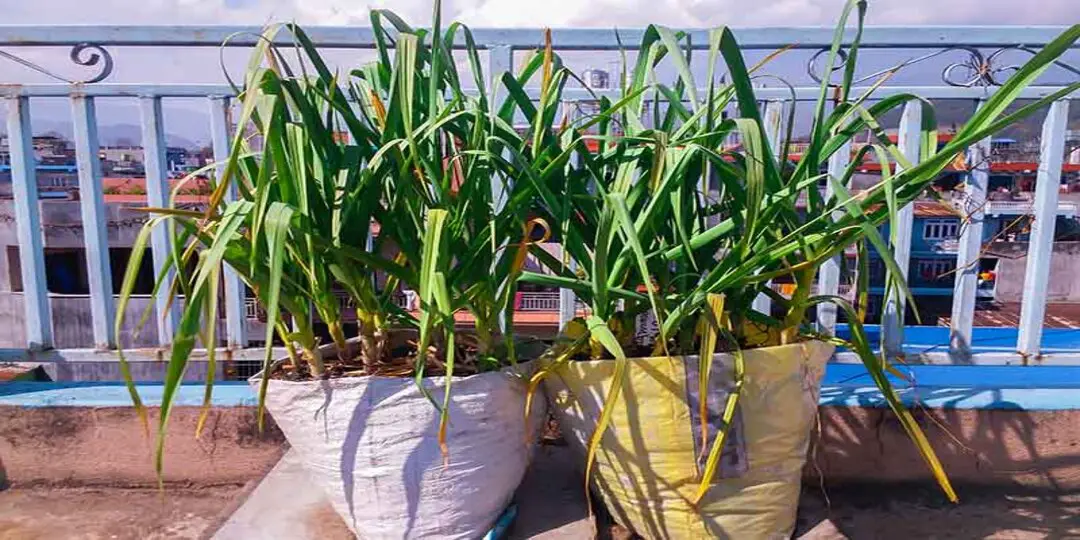
When growing garlic in pots, it is important to choose the right container to ensure optimal growth. By considering these factors when choosing your container, you can create the perfect environment for your garlic to thrive and enjoy a bountiful harvest. Here are some tips for selecting the perfect pot:
- Size: Garlic needs room to grow, so choose a pot at least 10 inches deep and wide enough to accommodate multiple garlic bulbs.
- Drainage: Garlic does not like soggy soil, so make sure the pot has drainage holes to allow excess water to escape.
- Material: Clay or terracotta pots are ideal for growing garlic as they provide good airflow and help regulate soil moisture levels.
- Quantity: If you want to grow multiple garlic plants, consider using a larger container or planting them in separate pots to give each plant enough space.
- Mobility: If you plan on moving your pots around, opt for lightweight containers with handles or wheels for easy transportation.
Benefits of growing garlic in pots
Growing garlic in pots can be a convenient and rewarding way to enjoy the benefits of this versatile herb. One of the main advantages of growing garlic in pots is that it allows you to control the soil conditions, ensuring that it is well-drained and rich in organic matter.
Additionally, growing garlic in pots makes protecting the plants from pests and diseases easier, as you can easily move them indoors or to a more protected area if necessary. Another benefit of growing garlic in pots is that it saves space, making it suitable for those with limited garden areas or even apartment dwellers.
Managing Potential Pests and Diseases
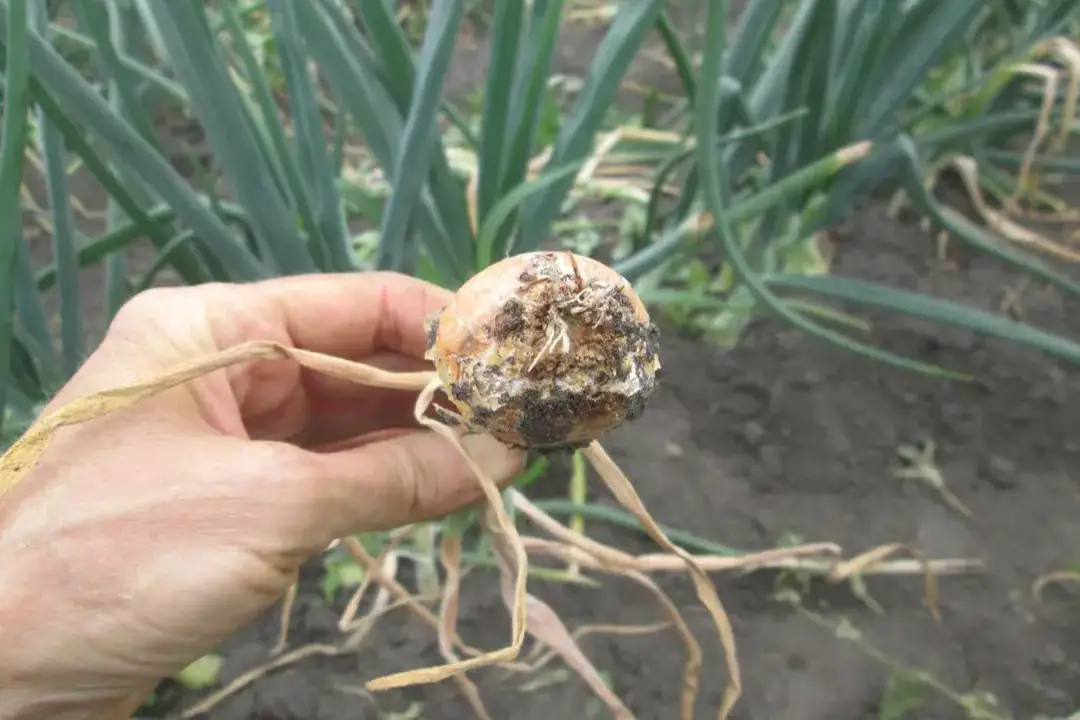
When growing garlic in pots, it is important to be aware of potential pests and diseases that can affect your plants. Following these tips can minimize the risk of pests and diseases affecting your garlic plants and ensure a successful harvest. Here are some tips to help you manage these issues:
- Practice Good Sanitation: Keep your pots and gardening tools clean to prevent the spread of diseases. Remove any dead leaves or plant debris from the pots regularly.
- Use organic pest control methods: If you notice pests on your garlic plants, such as aphids or mites, try using organic pest control methods like neem oil or insecticidal soaps. These products are gentle on the plants and can effectively manage pests.
- Rotate Crops: If you plan on growing garlic in pots year after year, it is essential to rotate your crops. This helps to prevent the buildup of diseases and pests in the soil.
- Provide Proper Drainage: Garlic plants prefer well-draining soil, as excessive moisture can lead to root rot and other fungal diseases. Make sure your pots have sufficient drainage holes and avoid overwatering.
Common mistakes To Avoid When Growing Garlic in Containers
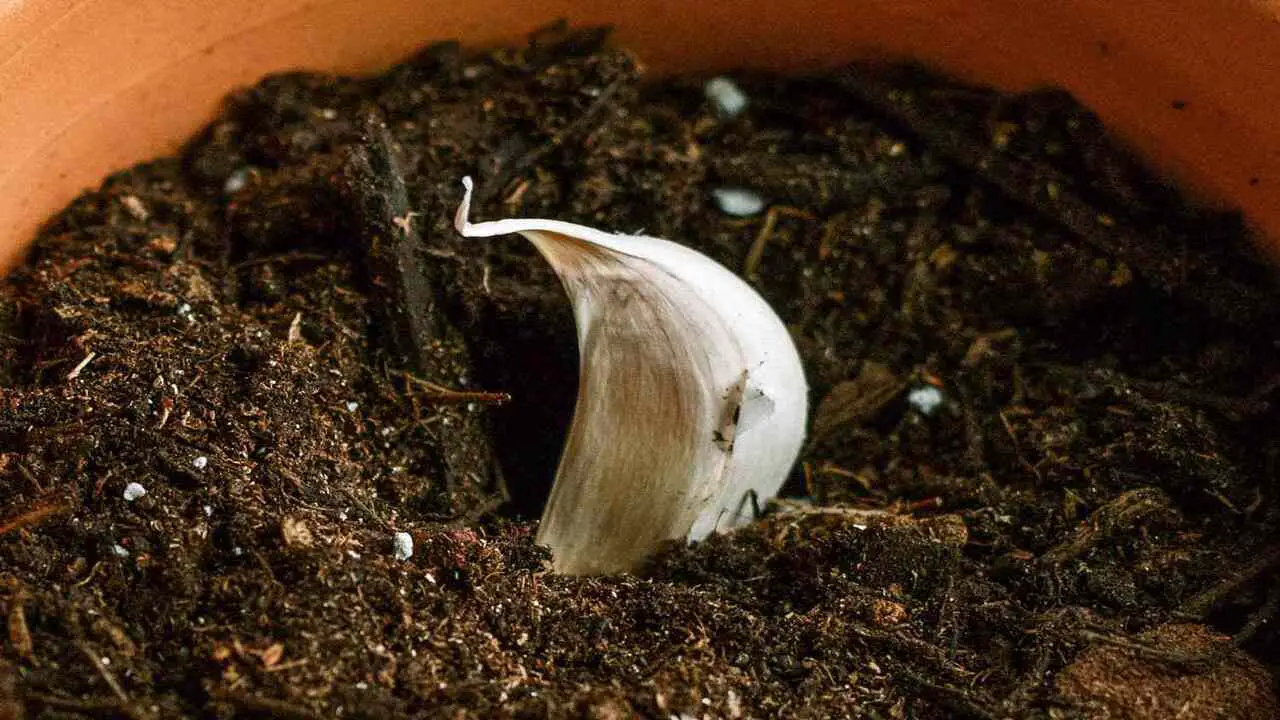
When growing garlic in pots, there are a few common mistakes that you should avoid to ensure successful growth. By avoiding these common mistakes, you can grow garlic in pots and enjoy fresh, flavorful bulbs for your culinary creations. Here are some tips:
- Choose The Right Container: Garlic bulbs need enough space to grow and develop roots, so choose a pot at least 6 inches deep.
- Use Well-Draining Soil: Garlic prefers well-draining soil to prevent waterlogging, which can lead to rot. Mix in compost or perlite to improve drainage.
- Plant At The Right Depth: Plant garlic cloves with pointed ends facing up and about 2 inches below the soil surface. Planting too shallow or too deep can affect bulb development.
- Provide Adequate Sunlight: Garlic needs full sun exposure for optimal growth. Place your pots in a spot that receives at least 6 hours of direct sunlight daily.
- Water Properly: Keep the soil consistently moist but not overly wet. Avoid overwatering, as this can cause bulb rot.
- Fertilize Appropriately: Use a balanced fertilizer high in nitrogen when planting and again once shoots emerge. Avoid over-fertilizing, as this can lead to excessive leaf growth instead of bulb development.
Conclusion
Growing garlic in pots is a convenient and rewarding way to enjoy this flavorful herb. With the right tips and techniques, you can grow garlic in containers even with limited space. From selecting the right pot and soil to providing adequate sunlight and water, each step plays a crucial role in the growth and development of your garlic plants.
Additionally, understanding the benefits of growing garlic in pots, such as easy maintenance and protection from pests, can further enhance your gardening experience. By following these essential tips and avoiding common mistakes, you’ll be well on your way to harvesting fresh and delicious garlic at home. So it is essential to know how to grow garlic in pots.
Frequently Asked Questions
1.Does Garlic Grow Well In Containers?
Ans: Garlic can thrive in at least 6-8 inches deep and wide containers. Use well-draining potting mix and plant cloves with the pointed end facing up. Regular watering is important but avoid overwatering. Harvest garlic when the leaves turn yellow and dry out.
2.Can You Grow Garlic In 5-Gallon Buckets?
Ans: Yes, it is possible to grow garlic in 5-gallon buckets. Ensure the bucket has drainage holes and fill it with potting soil and compost. Plant the garlic cloves about 6 inches apart, cover them with soil and water regularly, and harvest when the leaves turn yellow and begin to die back.
3.How Long Does It Take To Grow Garlic In Pots?
Ans: Garlic typically takes 7-8 months to fully mature, whether grown in pots or on the ground. The planting season for garlic is typically in the fall, with harvest in late spring or early summer. Depending on the variety and growing conditions, maturity may vary slightly. Adequate watering and fertilization throughout the growing period are essential for optimal results.
4.Do You Need To Use Fertilizer When Growing Garlic In Pots?
Ans: Using fertilizer is recommended when growing garlic in pots. It helps provide the necessary nutrients for proper growth. Opt for organic fertilizer or compost for best results. Follow the instructions on the packaging and avoid over-fertilization.
5.Can Garlic Be Grown In Pots And How?
Ans: Garlic can indeed be grown in pots. To start, choose a pot with good drainage holes that is at least 6 inches deep. Fill it with a well-draining potting mix and plant individual cloves about 3-4 inches apart. Keep the soil moist and provide full sunlight for optimal growth.








